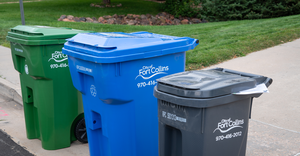Two Wheelabrator U.K. Facilities Reach Full Operations
Combined, Wheelabrator Parc Adfer and FM2 will process up to 964,000 tons per year of residual waste.

Wheelabrator Technologies realized major milestones in the United Kingdom (U.K.) in 2019 when two new waste-to-energy (WTE) facilities reached full commercial operations.
After three years of construction, the creation of approximately 1,500 jobs and $110,000 (£85,000) in contributions to local community causes and initiatives, the WTE facilities—Wheelabrator Parc Adfer, located at Deeside in North Wales, and Ferrybridge Multifuel 2 (FM2) in West Yorkshire—commenced operations in late December 2019 and will now play a critical role in the region's environmental and energy infrastructure.
Combined, Wheelabrator Parc Adfer and FM2 will process up to 964,000 tons per year (875,000 tonnes) of residual waste. Together, they will utilize waste as a fuel to generate a total output of 98 megawatts (MW) (gross)/89 MW (net), enough electricity to power an estimated 210,000 U.K. homes and businesses.
The facilities will divert residual waste from landfill, prevent the need for export of waste to continental Europe, reduce greenhouse gases, recycle metals that would otherwise go to landfill and generate clean, renewable baseload energy.
Wheelabrator entered the U.K. market in 2009 to target Private Finance Initiatives and shortly after commenced its support for the startup of Riverside Resource Recovery Facility in Belvedere, London. Wheelabrator said it has since successfully developed, financed and managed the construction of four waste-to-energy facilities. The first to be delivered was Ferrybridge Mutlitfuel 1 (FM1), part of the Multifuel Energy Limited (MEL) joint venture with SSE, which commenced commercial operations in July 2015 to process 744,000 tons per year (675,000 tonnes) and generate 79 MW (gross)/72 MW (net) after being built by Hitachi Zozen Inova (HZI). According to the company, it is now recognized as one of the most efficient waste-to-energy facilities in the U.K. FM2, also built by HZI, is expected to achieve comparable levels of performance, being managed by the same management team within the MEL joint venture. Since commencing full operations in December 2019, Wheelabrator Parc Adfer, built by EPC contractor CNIM, has a capacity of 220,000 tons per year (200,000 tonnes). Wheelabrator Kemsley, also being built by CNIM, is expected to come online in Q2 2020. The facility will process 605,000 tons (550,000 tonnes) and generate 69 MW (gross)/63 MW (net) when the facility is taken over from CNIM.
Once all four assets are operational, they will process 2.3 million (M) tons (2.1M tonnes) of residual household and commercial waste and generate 1.1M net megawatt hours of renewable, baseload energy each year.
"This is a significant accomplishment for our business and is transformational for our team in the U.K. as we commence operations at both Wheelabrator Parc Adfer, and FM2, the second facility within our MEL joint venture with SSE,” said Bob Boucher, president and CEO at Wheelabrator, in a statement. “Growth in this market has been our number one strategic priority, and I am proud of our team and our customers for continuing to demand and support sustainable waste management in the U.K. Takeover of these two facilities is the result of many years of commitment, hard work and strong partnerships with our customers and the communities we operate within."
"There remains a significant capacity gap in this market, and we continue to explore opportunities to develop new waste-to-energy facilities to ensure local, sustainable waste management solutions, and provide energy security for the U.K. With limited landfill space, high landfill taxes, high costs and increasing barriers to exporting waste to continental Europe and the need to invest in baseload electricity generation, Wheelabrator is well-positioned to unlock future opportunities to provide sustainable waste management to local communities," added Boucher.
About the Author
You May Also Like


